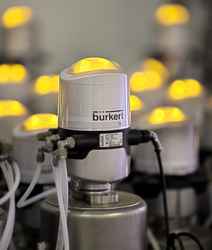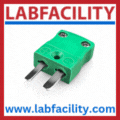
Posted to News on 12th Jul 2012, 13:54
Three-tier approach for automation of hygienic processes
In food and beverage industries, typically breweries and dairies, the key to finding the best possible automation system is a thorough analysis of each individual part of the plant or installation. In this way, the question of where plant intelligence should rest can be answered: i.e. does the nature of the application require centralised control interfacing to non-intelligent nodes, or does the physical size of the system mean that control has to be decentralised - using a fieldbus system and intelligent valves and actuators.

Usually, the best solution for large and complex plants is not a single, one-dimensional automation concept covering the entire process of production. In fact, each different part and section of the process, down to machine level, has its specific requirements. Consequently, an intelligent combination of different automation concepts will provide the desired results. In order to achieve this goal, Brkert is deploying three equally important automation approaches in parallel: centralised and decentralised automation, as well as locally installed modular pneumatic valve units and compact automation systems.
The centralised control concept is the most traditional of these, and although displaced in many larger plants, centralised cabinets with automation systems for electrical and pneumatic signals have certainly not lost their importance. The major drawbacks of centralised systems are extended control air lines that increase air consumption and have a negative effect on the switching times of the valves. In addition, there are also concerns as regards hygiene. According to HACCP, every additional control air and feedback line within the production plant is a potential source of contamination and risk, and must therefore be monitored, serviced and cleaned regularly, which is a costly undertaking.
Decentralised automation is a more recent concept. It employs intelligent pneumatic process and control valves for all production processes, and utility circuits such as cleaning agents, steam or temperature control. The result is flexibility for project planning, installation and maintenance, as well as transparency for process control.
The use of decentralised automation system, employing innovative intelligent process valves, eliminates the problems of centralised systems, because automation functions - pilot valves, electrical and optical position feedback and fieldbus interfaces - are integrated directly into the actuators of process valves. This approach minimises the number of cables and compressed air lines. In addition, the concept is very flexible and provides further key features.
Intelligent valve approach
By integrating an AS interface as a fieldbus interface, the entire range of advantages of the intelligent valve approach can be fully utilised. All that is required for power supply, feedback and communications is a two-wire connection, interfacing the PLC with up to 62 valves. Each process valve is connected directly to the main compressed air supply line in the field, reducing the number and length of tube and cable connections, as well as the number of required control cabinets to a minimum. The valve systems themselves are designed according to the EHEDG guidelines for hygienic design and easy cleaning: they feature the high IP protection required by the actual application, and are made exclusively of detergent-proof materials. As a result, they are not affected by prolonged use in environments with high levels of humidity, or by frequent cleaning cycles with aggressive chemicals.
Flexible pneumatic valve units and compact automation systems bridge the gap between centralised and decentralised automation concepts. Using stainless steel attachment plates, these units are wall-mounted directly inside small, hygienically designed cabinets that can be installed close to machines and processes. These small, pre-configured and standardised units eliminate the long runs to valves and field devices, and can easily be kept clean.
Burkert's new AirLINE Quick uses this concept. The AirLINE Quick adapter is a complement to Brkert's valve terminals and automation systems, which are designed for use in many different areas of hygienic processes and readily fulfil the high standards of the market segment. This compliance is ensured by the integrated process safety features of the type 8640 valve terminals and type 8644 automation system: features that are especially important in hygienic processes.
With AirLINE Quick, all pneumatic connections, the Fieldbus interface and the I/O modules can be mounted directly on the control cabinet base or side. This facility allows for an altogether smaller design of control cabinets. Additional components such as pipes, cables or control cabinet connections are eliminated, due to direct mounting, further reducing the time needed for installation and commissioning.
Three-tier automation
By employing its three-tier automation approach, Brkert is able to provide independent consulting and flexible hygienic processing control systems from a single source. With a high degree of standardisation and state-of-the-art design, these approaches can make the engineering and commissioning of automation systems much easier and less costly. In addition, end-users benefit from plant standardisation, with easier plant monitoring and diagnosis, as well as reduced costs for maintenance and ownership of their facilities.
For additional information about Burkert's automation systems, including AirLINE Quick, please log on to www.burkert.co.uk.
Fluid Control Centre
1 Bridge End
GL7 1QY
UNITED KINGDOM
+44 (0)1285 648720




